Maxus eDeliver 7 van review (2024)
The Maxus eDeliver 7 has its quirks but is an impressive electric van
PROS
- Strong electric range
- Choice of lengths and heights available
- Competitive pricing
- Two battery options
- Growing dealer support network
CONS
- Very high loading floor
- Two battery options are quite similar to one another
- Lots of intrusive bonging noises on the move
- Fiddly infotainment system
- Lacks big-brand recognition
Summary
The Maxus eDeliver 7 is the latest all-electric van to come from the Chinese manufacturer. It takes on what is arguably the most competitive segment in the light-commercial vehicle industry as it looks to compete with the best medium vans.
This means that it is up against some really strong rivals that have much more in the way of brand recognition and a long history with many of the customers that Maxus is looking to entice into the eDeliver 7.
It takes a simple approach in some senses – it is offering an impressive electric range, a selection of different body shapes and pricing that is designed to appeal to those who are after value for money. Add in to this the ever-growing network of Maxus dealers that are there to help support you once you’ve signed up to the brand, and the company is looking to remove the stumbling blocks between you and a new eDeliver 7.
What are the Maxus eDeliver 7’s rivals?
There are plenty of mid-size electric vans on sale already, and more on the way. This is little surprise as this is the category that features the biggest-selling models in the UK.
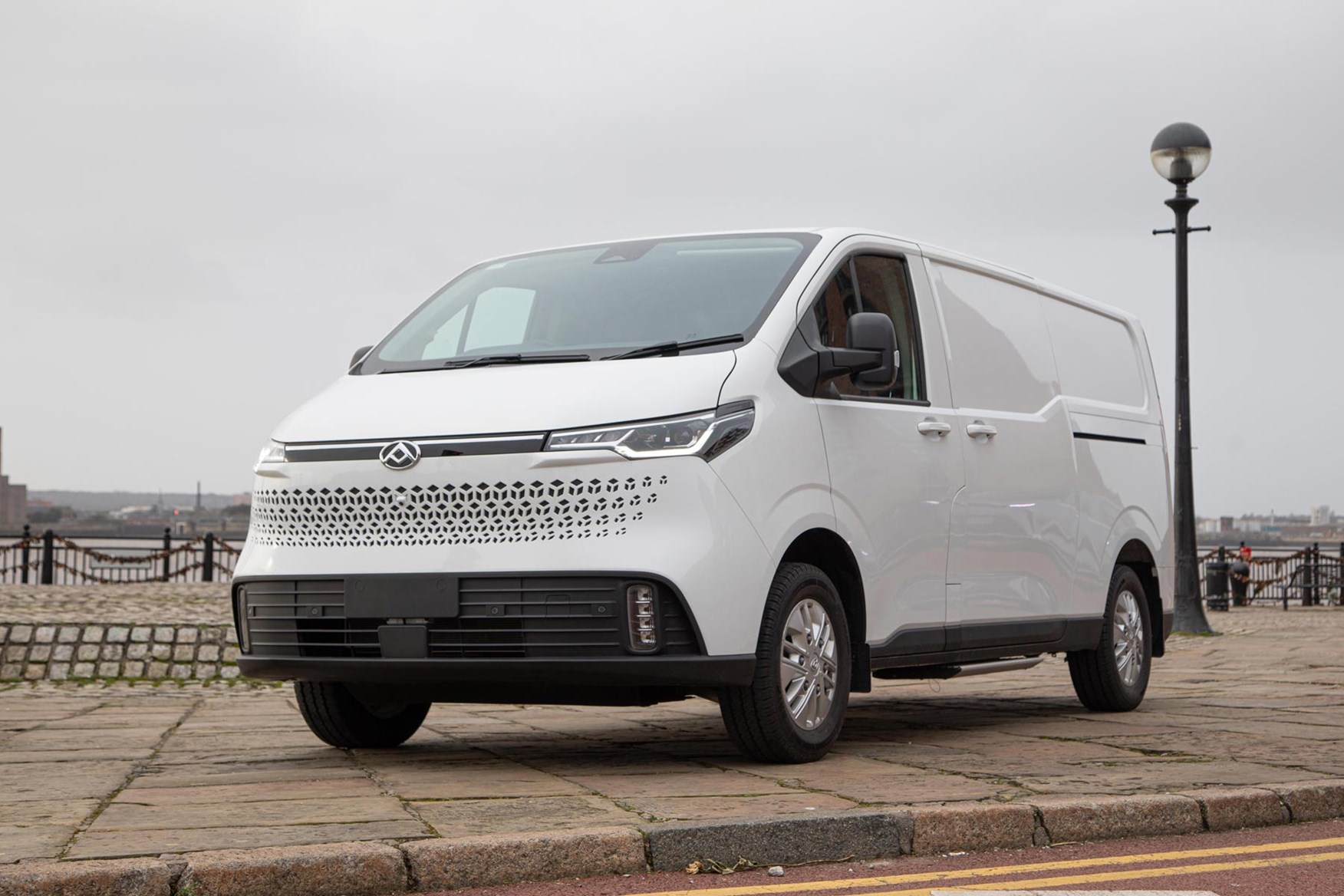
It’s the Stellantis brands that dominate the options though, with the Citroen e-Dispatch, Peugeot e-Expert, Fiat E-Scudo and Vauxhall Vivaro Electric all fundamentally the same van. They are all getting a major update in 2024, with their electric ranges increasing to a maximum of 224 miles. This is a relatively small jump though – they promised 211 miles before the facelift.
These four are joined by the Toyota Proace Electric. Toyota isn’t part of the Stellantis group, but it takes the same medium van and rebadges it. Being a Toyota comes with some plus points, though – you get to deal with its impressive dealers and you get the bonus of Toyota’s unrivalled 10-year warranty.
Other electric rivals include the Renault Trafic E-Tech, Mercedes eVito and Maxus’s own slightly smaller eDeliver 3. There is also the stylish Volkswagen ID.Buzz Cargo, which is also not as big inside as the rest of the medium van class.
Ford is entering the market in 2024, with the Ford E-Transit Custom. This promises a range of 236 miles and all the positives that comes with the excellent new Custom.
The Volkswagen Transporter is the same fundamental van these days, so the next generation will also come with an electric version when it goes on sale in 2025.
What versions of the Maxus eDeliver 7 are there?
There is only the one trim of eDeliver 7 available, but this doesn’t mean you are stuck for choice. There are two battery options and two lengths and heights on offer.
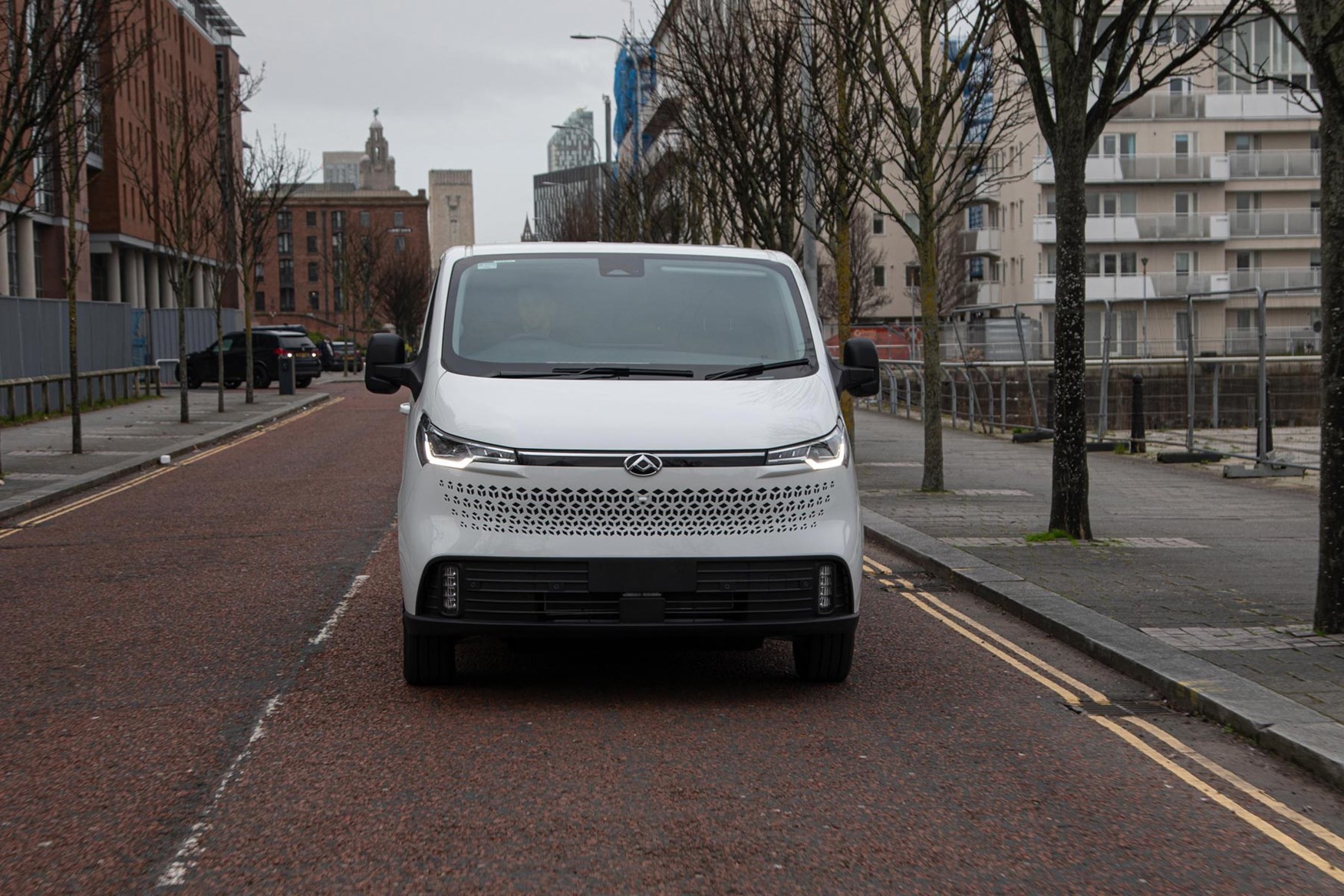
Not all combinations of length and height are available though, with three sizes to pick from. There is a short/low L1H1, a long/low L2H1 and a long/high L2H2. Both batteries – a 77kWh and 88.55kWh – are offered on all three sizes.
Verdict: is the Maxus eDeliver 7 any good?
In many ways the Maxus eDeliver 7 is a strong contender in the medium electric van class. It offers good value, a simplicity of model range and a wide range of sizes that should cover most needs.
However, it has a few quirks – particularly in the loading bay and in how it drives – that will be sticking points for some.
The real challenge will come when the big names – Ford and Volkswagen – enter the market with ranges that are not far shy of the eDeliver 7’s impressive offering. Unlike the large-van market, where the Maxus eDeliver 9 stands out against some poor rivals, this is a sector where being good is par for the course and buyers can afford to be more demanding as a result.
Skip to our full verdict on...
- Simple to get going and operate
- Some annoying alerts and controls
- Firm ride and sharp acceleration
Maxus has not shied away from the potential that electric power provides, with the eDeliver 7 a swift and sometimes entertaining vehicle to drive. Its pickup speed from stationary is particularly swift, and it is possible to get the driven front wheels to spin if you apply too much power without any weight on board.
It might take a little moment to get used to that, but that is about all the adaptation that you need to do – this is a simple van to get into and get moving. It has keyless start, so it is just a case of getting in, pressing the ‘Start’ button and moving the gear shifter into D. This comes in the form of a lever up by the steering wheel, so it takes up little space and is easily reached.
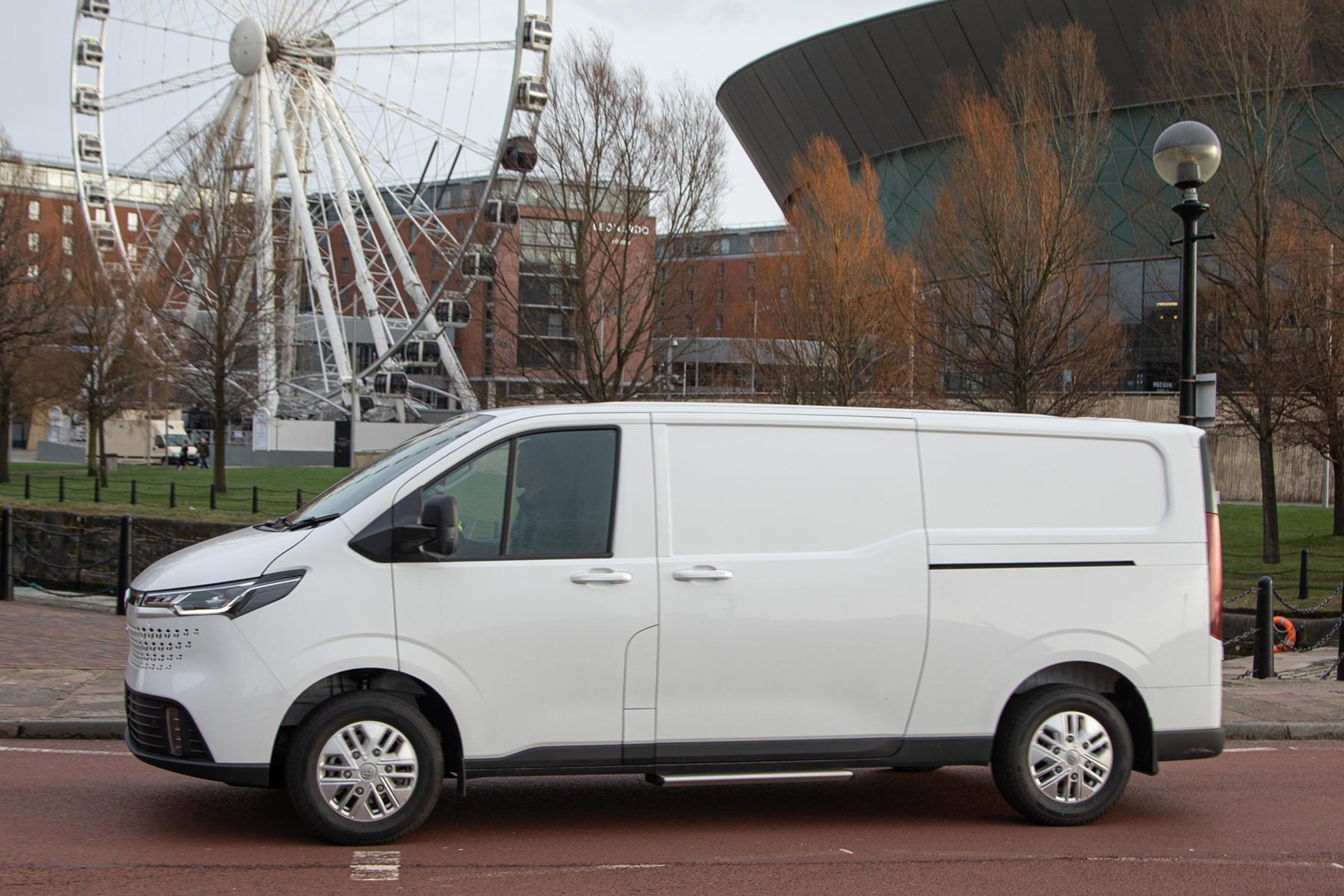
There are more things you can do to adjust how the eDeliver 7 drives, and this is where it gets a little more complicated. There is a mode button down by the right of the steering wheel, which rotates you between Eco, Normal and Power.
As is often the case with an Eco mode in an EV, the former of these restricts the throttle response and the top speed. The latter is limited to 55mph in Eco mode, while you can carry on to 75mph in Normal and Power.
Beeping and button prodding
However, if you exploit this and go over the speed limit then that’s when the beeping starts. The eDeliver 7 is very vocal if you go over the legal maximum, but it is fond of a beep at other times too.
It has a little camera that faces the driver, which monitors your movements and interprets them using artificial intelligence. It then determines when you are not paying attention to the road, either through distraction or fatigue. It will then sound a rather loud and persistent alarm to drag your focus back onto the road. We managed to set it off and found it rather invasive, but it is likely to be a welcome wake-up call if you are driving on the edge of being too tired.
Should you want to turn off any of the systems then it’s into the infotainment system you go. This is the case for many of the warning systems you want to toggle on and off, but it is also where you need to go if you want to adjust the brake regeneration, which is unusual and unwelcome.
Most electric vehicles have this feature controlled by a button, but in the case of the eDeliver 7 it requires you to take your eyes off the road and prod around on the touchscreen. This is not helpful if you regularly change between urban driving where you want lots of regen and motorway driving where you want to dial it back.
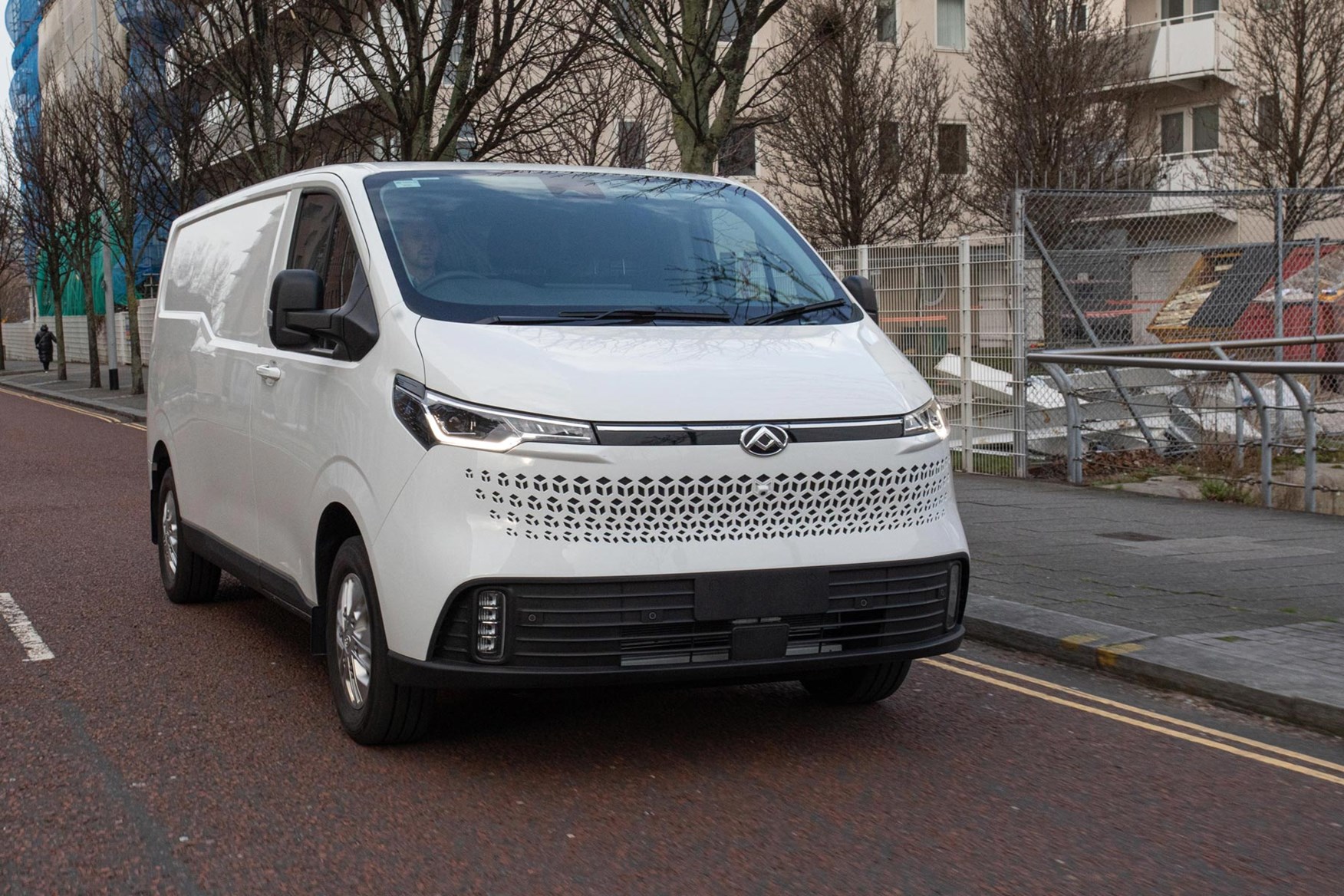
However, this is made less relevant by the fact that the Maxus has very little regen even in the highest setting. On some vehicles it feels like you are pressing the brakes as soon as you lift off the accelerator, but on the eDeliver 7 it is much gentler and it certainly won’t slow you to a standstill or even close.
Firm ride, sharp steering
The eDeliver 7’s ride is on the firm side, thumping over some of the rougher parts of our test route. This was with nothing in the back, though, so we can’t pass comment on what it is like with a full or even half payload.
This helps contribute to the controlled handling, too, which is also aided by the reactive steering.
- Footwell a little cramped
- Good space for three
- Fiddly infotainment
The cabin in the Maxus eDeliver 7 is made from the same mould as the larger eDeliver 9 rather than the slightly quirky eDeliver 3. This is by far the better option, as it means you get a modern looking and smartly simplistic cabin.
Space for three
The standard seating layout is a front passenger bench seat, which means you get room for three in the cabin. You can go for a solitary passenger seat if you wish, though.
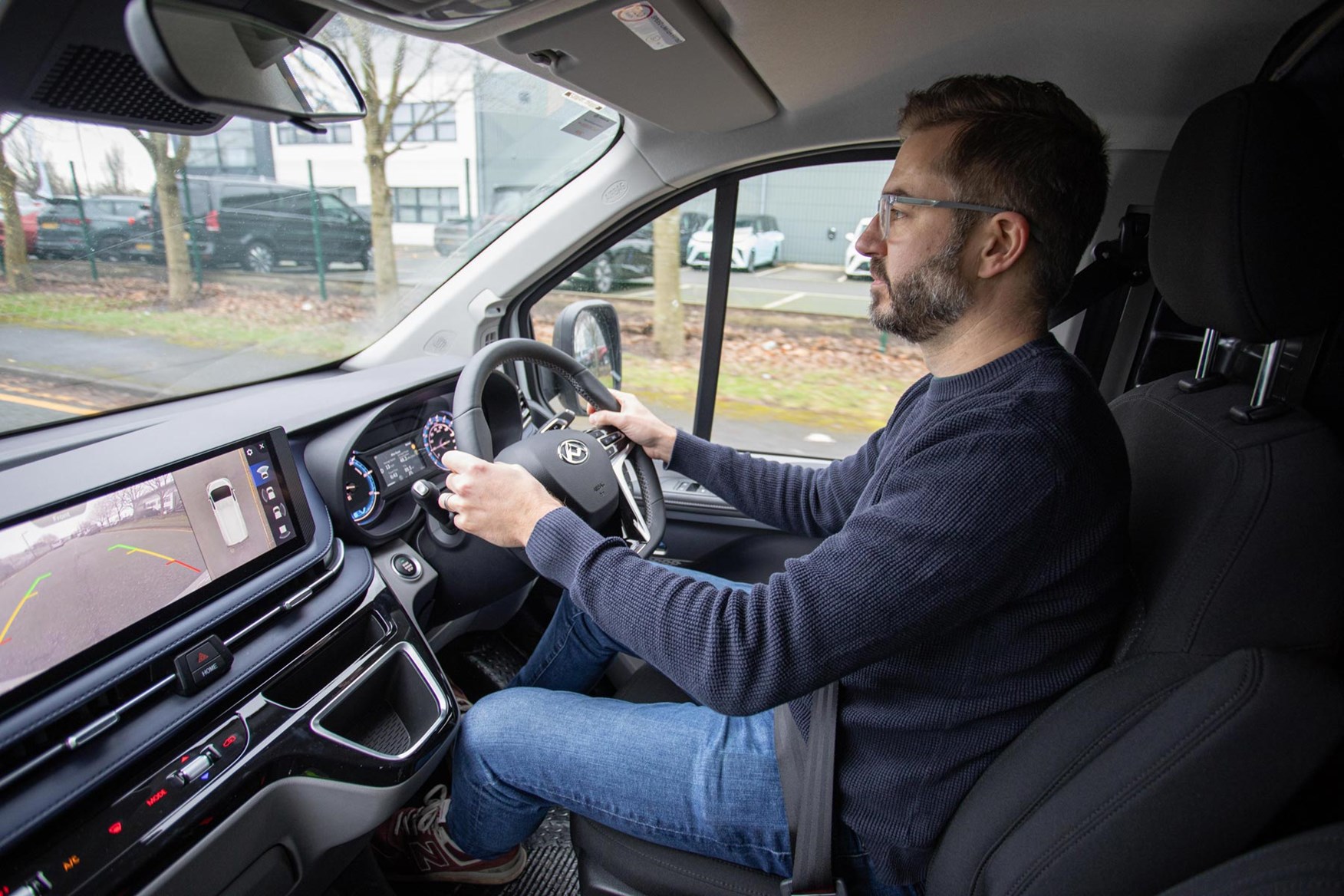
We managed to get three adults sitting alongside each other without any trouble. The middle seat is the smallest, as is normally the case, but it didn’t feel like a part-time option. Because the gear shifter and parking brake are both tucked away and controlled by levers or buttons elsewhere, there is nothing really in the way of the middle passenger’s knees.
The floor isn’t totally flat, but it isn’t far off, and there is a little cubby that gives a little more foot space as well. It’s more geared towards normal shoes than huge working boots though.
The driver’s footwell could do with a little more room, though. There isn’t a large amount of space to the left of the pedals, which means your redundant left foot has to tuck backwards rather than being able to nestle neatly on a little rest.
Smart looking screen but tricky to use
In front of the middle passenger is a standard-fit 12.3-inch infotainment touchscreen. The features it comes with are impressive, but it is fiddly to use.
It’s swift to respond, but it uses an operating system unlike any other at rival manufacturers, so anyone coming into an eDeliver 7 will have to learn it from scratch. For those who want some familiarity, it comes with Apple Carplay and Android Auto as standard.
However, you won’t be able to put Google Maps on and stick with it, as there are various features that are controlled through the screen, like the heating and, most oddly, the brake regeneration.
Minimal storage
The Maxus’s cabin is more car like in its layout, with relatively minimal storage for a commercial vehicle. There are no huge dash-top boxes for example, and nothing above your head. There is just a glovebox and a couple of average-sized door bins.
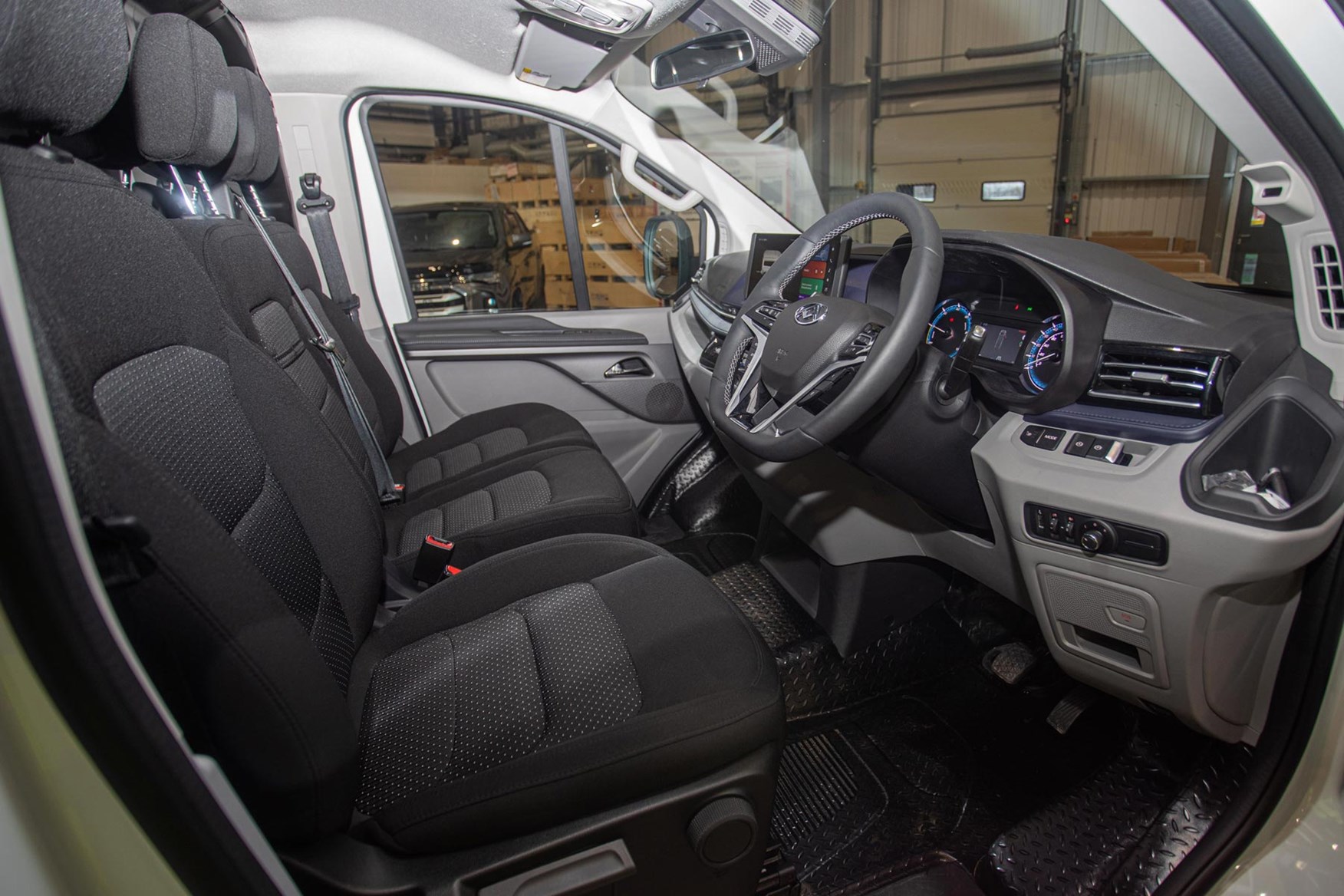
There are at least three cupholders, so all three occupants will be able to bring along a beverage.
The eDeliver 7 is aiming to appeal strongly to those who want value for money, so not only does the single trim come well equipped but it is also keenly priced versus rivals.
Maxus eDeliver 7 range
There are two batteries to pick from, but you might think the options offered are slightly curious ones. This is because they are really quite close to each other in terms of range. There is a 77kWh battery and an 88kWh version. The former is only offered on the two low-roof models, while the bigger is available on all three bodies.
The L2H1 model is the one with the lowest possible maximum, but even that provides an official WLTP combined range of 190 miles, which would be a strong contender in the mid-size van class. This increases to 200 miles on the shortest low-roof version.
The high-roof version with the 88kWh battery also offers the same 200-mile range, while this increases to 225 miles and 230 miles as you go for the smaller two models.
Maxus eDeliver 7 warranty
As with all Maxus vehicles, the eDeliver 7 comes with five years/60,000-miles warranty. It also gets five years roadside assistance cover as standard
Maxus eDeliver 7 standard equipment
Maxus has gone for the simple approach of only offering one trim of eDeliver 7 and stacking the equipment levels high. There are a few options, but these, with the exception of the external colours, are features that only a few buyers will want.
Some of the features that are offered, such as the heated steering wheel and heated windscreen, are things that other van brands might not provide even on their top versions.
- Automatic LED headlights
- Front and rear fog lights
- Powered and heated door mirrors
- Heated quick defrosting windscreen
- Keyless entry and start
- Heated leather steering wheel
- Heated driver and passenger seat
- Two-seater passenger bench
- Automatic rain-sensing wipers
- Manual air conditioning
- 12V power outlet
- USB sockets
- 3-inch colour touch screen
- Bluetooth
- Apple Carplay and Android Auto
- Single sliding side door
- Full-height steel bulkhead with plastic window
- Side-hinged rear doors with 90 and 180-degree opening
- 6m, 11kW charging cable
- Electric power take off, with up to 5kW capacity
- Trailer hitch interface
The options are few, and include a single front passenger seat for those that want a bit more room in the cabin and a second sliding door on the right-hand side of the van. The other that might be worth considering is the powered side step, which is on the left of the vehicle and comes out and tucks away automatically when you open the sliding door. It’s handy and made more so because of the high loading bay floor.
One downside of the Maxus brand being a relatively new one to the UK is that we don't have a large amount of data to look at when it comes to reliability. Electric vehicles can fare better than diesel equivalents due to their relative simplicity, and the five-year warranty and roadside recovery should help a little too.
- Lots of driver aids
- Intrusive beeping
- Multiple airbags
Vans often scrimp on the safety equipment, so it is good to see the Maxus eDeliver 7 provide plenty, both in terms of passive and active safety. Euro NCAP hasn't assessed any of the Maxus vans yet, but this all bodes well.
It’s particularly pleasing to see so many airbags, with front, side and curtain ‘bags for both driver and passenger.
The assistance systems included as standard are as follows:
- Blind spot detection
- Lane change assist
- Rear cross traffic alert
- Door opening warning
- Front collision warning
- Lane departure warning and lane-keep assist
- Emergency lane-keep assist
- Adaptive cruise control with stop and go
- Speed limit sign recognition
- Driver fatigue monitoring
There is also a 360-degree camera with an overhead view, a reversing camera and front and rear parking sensors. Finally, an E-Call button will alert emergency services should an accident happen. The button is slightly oddly located, though, being down by the driver’s right knee rather than in the more common spot up on the roof near the rear-view mirror.
Which MAXUS eDeliver 7 is best for me?
There is just the one trim of Maxus eDeliver 7, which makes it just a case of choosing which body shape and battery fits you best.
It’s curious there is so little difference between them, so there is no straight shootout between range and payload. On that basis, if you aren’t going to be carrying heavy loads all the time then we’d go for the version with the longer range – the 88kWh battery in the urban friendly lower roof would be our pick, but there really is little to choose between them all.









